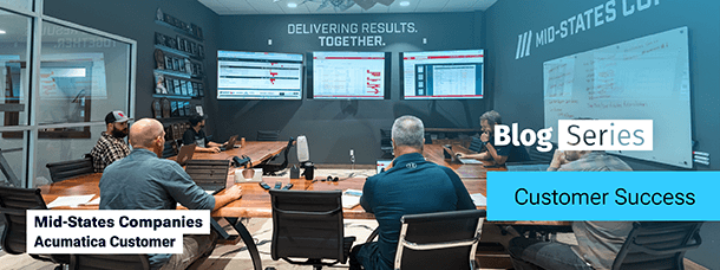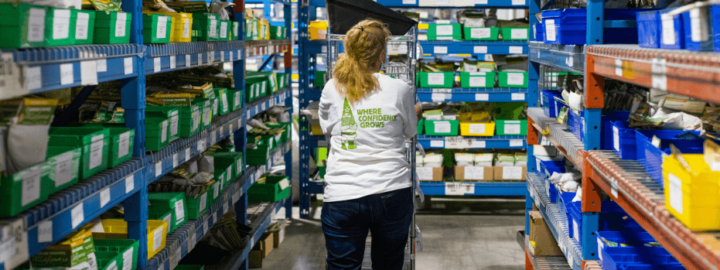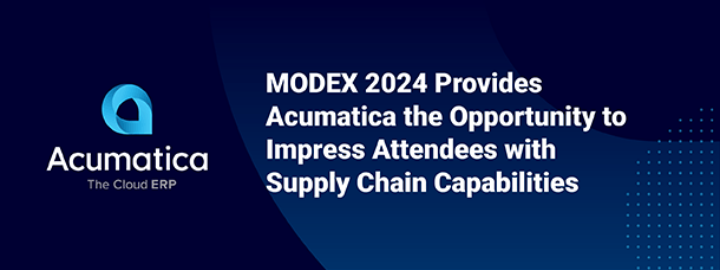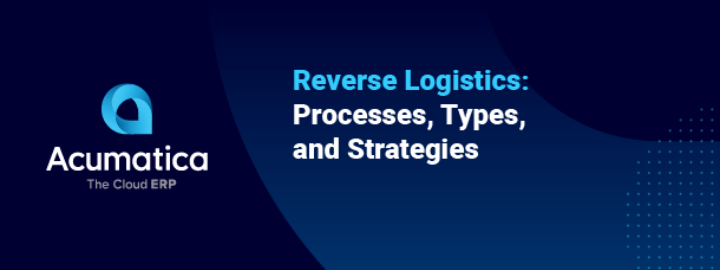
According to its First Quarter 2023 Outlook Survey, the National Association of Manufacturers (NAM) found that 74.7% of small, medium, and large manufacturing respondents “felt either somewhat or very positive” in their company outlook. Even so, challenges within the industry persist, with 55.8% of the respondents citing concerns about ongoing supply chain disruptions caused by the pandemic, inflation, the Ukraine-Russia conflict, and more.
These ongoing supply chain challenges are imposing higher costs, delayed shipments, raw material shortages, and more on all SMBs, particularly those in the manufacturing industry. That’s why Acumatica teamed up with Forrester—a leading global market research company—to offer smart supply chain strategies via an informative online webinar.
The aptly titled webinar, “Smart Supply Chain Strategies for SMBs,” is now available on-demand, and today, I’ll provide highlights from my discussion with Forrester VP and Principal Analyst George Lawrie.
The Supply Chain’s Impact on SMBs
During our discussion, George, who has been a Forrester expert for over 16 years, provides deep insights into the issue, starting with how these supply chain challenges are negatively impacting SMBs’ solvency. He explains that SMBs’ cost of capital is typically higher than their larger competitors.
“Now that we’re beginning to see interest rates go up—we’re seeing them think a lot about their working capital.”
To counteract these greater costs, some companies are reducing credit terms for their customers while negotiating to increase their credit from suppliers. According to Lawrie, one Forrester client was able to increase their 30-day term with their suppliers to a 90-day term by providing “a lot more transparency about their process and stages of invoice approval.” With that certainty, their suppliers were happy to offer them more credit.”
In addition to increased transparency, George indicated that SMBs are focusing on inventory, specifically finished goods. “We’ve seen them thinking about managing their inventory much more closely and much more effectively.”
During the pandemic, manufacturers increased their safety stock levels, but now that they feel comfortable reducing their safety stock levels, they’re struggling to make it a reality—and it’s costing them.
Effective inventory management should, according to George, include assessing supply chain agility and effectiveness against that of peers. Forrester’s Supply Chain Evaluation Tool shows the relationship between inventory turnover and increase in rate of revenue as well as margins.
At Acumatica, we highly recommend using a tool like Forrester’s to assess supply chain vulnerability. We also have five questions that you as a distributor or manufacturers can ask yourself as you begin the supply chain assessment process.
- Do you source any of your top ten items or materials from a single supplier?
- Do you often experience stock-out situations or late receipts from vendors?
- Do you source a significant percentage of inventory from overseas suppliers?
- Have you lost customers due to supply chain issues?
- Have supply chain issues dramatically impacted sales, service, projects, or production plans?
If you answered “yes” to any of these questions, then you’ll want to watch this webinar to learn why your business is particularly vulnerable to supply chain disruptions. For example, I explain that sourcing the majority of your inventory from overseas suppliers—while helping to lower costs and supplying you with a wider range of products—leaves you in a lurch when global problems, such as the pandemic or civil unrest, cut off your access.
A recent Acumatica blog on supply chain resilience touched on the importance of decreasing dependence on international suppliers noting the following advantages of working with suppliers closer to home (a.k.a., nearshoring or reshoring):
- Reduced points of potential conflict or disruptions from unexpected events.
- Greater control over inventory.
- Closer proximity of producers and consumers.
- Reduced freight/shipping costs.
Using Modern ERP Solutions as a Supply Chain Management Strategy
Additional topics, including embedded enterprise policies and solvency, disruption opportunities for manufacturing SMBs, and how collaborative supply networks point to the future were raised throughout the webinar. George and I discussed why having a comprehensive ERP solution can help SMBs alleviate their supply chain challenges.
For example, SMBs can use their ERP solution to manage safety stock and economic order quantity calculations. Even though companies utilize these calculations when they set up items in their ERP solution, they don’t apply the information.
George believes that with lead times, average daily usage, and demand changing all the time, this is not a good practice. “You need to be revisiting those continually in ERP, and you need an ERP that helps you to do it.”
Acumatica’s modern cloud ERP solution is purposely built to enable SMBs to navigate the challenges of today’s complex economy and can help you meet supply chain disruptions head-on.
Acumatica provides the manufacturing and distribution features and functionalities that ensure purchasing, sales, production, service, project accounting, construction, and financial applications are connected within a single solution. With Acumatica, you can easily automate warehouse transactions and replenish inventory accurately while also supporting lead times, safety stock, economic order quantities, seasonality, min/max, moving average forecasts, and more. And built-in business intelligence tools powered by artificial intelligence (AI) provide accurate, timely information that can help you predict and respond to unexpected supply chain events, eliminate bottlenecks, and help you adjust strategies to meet your changing supply chain needs.
George summed it up by saying “In our experience, you need to evolve a culture, a process that capitalizes on the new technologies.”
Watch the Supply Chain Strategy Webinar Today
I’ve barely scratched the surface of what we covered in our free supply chain webinar. I encourage you to watch it today to learn more as well as to discover how Acumatica has helped thousands of customers, like Patrick Madison, CFO of Korpack, with their supply chain challenges.
Says Madison, “[With Acumatica], We know the pricing of 10 different vendors on the same product so we can compare them instantly and, depending upon those needs, satisfy whatever is the customer’s biggest priority.”
For more information about Acumatica’s extensive supply chain management functionality, you’re welcome to download our complimentary Playbook, “Mitigate Supply Chain Disruption with Acumatica Cloud ERP” and to contact our experts at any time.



















